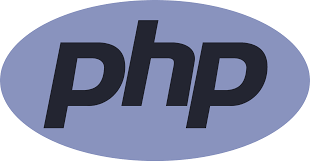As an expert in web development, I understand the critical importance of validating user inputs, particularly when it comes to collecting names and email addresses. In this comprehensive guide, we will explore the world of name and email validation in PHP, covering best practices, techniques, and addressing common questions. By the end of this article, you'll be equipped with the knowledge to ensure secure and accurate data collection in your web applications.
The Significance of Data Validation
Before we dive into the specifics of name and email validation in PHP, let's understand why data validation is crucial for web applications:
Security: Validating user inputs prevents potential security vulnerabilities, such as SQL injection or cross-site scripting (XSS) attacks.
Data Accuracy: Ensuring that collected data is in the correct format improves data accuracy and reduces errors.
User Experience: Prompting users with meaningful error messages helps them correct input mistakes and enhances their overall experience.
With these factors in mind, let's explore the best practices for validating names and email addresses in PHP.
Name Validation in PHP
Validating names may seem straightforward, but it can be surprisingly complex due to the variety of naming conventions across different cultures. Here are some best practices for name validation:
1. Allow Unicode Characters
Names can contain characters from various languages and scripts. Therefore, it's essential to allow Unicode characters to accommodate diverse naming conventions.
2. Minimum and Maximum Length
Set reasonable limits for the minimum and maximum length of names to prevent excessively short or long entries.
3. Reject Special Characters
While names can contain hyphens, spaces, and apostrophes, it's advisable to reject names with excessive special characters or numbers.
4. Case Insensitivity
Consider making name validation case insensitive to allow for variations in capitalization.
5. Whitelisting
You can create a whitelist of allowed characters and reject any names that contain characters not on the list.
Here's an example of name validation in PHP:
$name = $_POST['name'];
if (preg_match('/^[A-Za-z\s\-\'\p{L}]+$/u', $name)) {
// Name is valid
} else {
// Name is invalid
}
This regular expression allows letters, spaces, hyphens, and apostrophes while also accommodating Unicode characters.
Email Validation in PHP
Email validation is a critical aspect of data collection. Here are best practices for validating email addresses in PHP:
1. Filter Input
Use the filter_var function with the FILTER_VALIDATE_EMAIL filter to check if an email address is in a valid format.
$email = $_POST['email'];
if (filter_var($email, FILTER_VALIDATE_EMAIL)) {
// Email is valid
} else {
// Email is invalid
}
2. Domain Validation
In addition to format validation, you can also verify the domain of the email address by checking DNS records.
3. Disposable Email Addresses
Consider implementing checks to identify disposable email addresses commonly used for spam.
4. Case Insensitivity
Email addresses are not case-sensitive, so consider converting them to lowercase for consistent validation.
5. Real-time Validation
For added security, you can implement real-time email validation by sending a verification link to the provided email address.
Frequently Asked Questions (FAQs)
Q1: Can I use regular expressions for email validation in PHP?
A1: While regular expressions can be used for email validation, it's often more reliable to use the filter_var function with the FILTER_VALIDATE_EMAIL filter, as it checks both format and domain validity.
Q2: Should I validate names and email addresses on the client-side or server-side?
A2: Both client-side and server-side validation are important. Client-side validation enhances user experience, while server-side validation is essential for security and data integrity.
Q3: How do I prevent SQL injection when handling user inputs?
A3: To prevent SQL injection, use prepared statements and parameterized queries when interacting with your database.
Q4: What is the best way to handle validation errors and provide feedback to users?
A4: Display clear and user-friendly error messages next to the relevant form fields, describing the issue and how to correct it.
Q5: Can I use libraries or frameworks for data validation in PHP?
A5: Yes, you can leverage PHP libraries and frameworks, such as Laravel's validation system, to streamline data validation in your web applications.
Conclusion
Mastering name and email validation in PHP is fundamental for secure and reliable data collection in web applications. By following the best practices and techniques outlined in this guide, you can ensure that user inputs are accurate, secure, and enhance the overall user experience. Implement these strategies in your PHP projects to create robust and user-friendly web forms.



